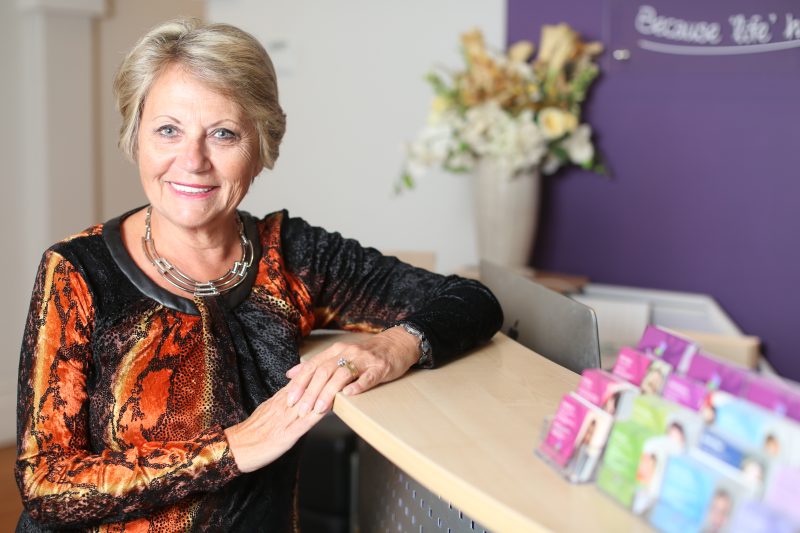Recently I found out that an ex-client from my old workplace had completed suicide, which really rattled me as a person and a psychologist. I immediately thought of the pain and despair they must have had to feel that it was impossible to continue living, pictured the grieving family and friends and then reflected on my past interactions with them. A week after I heard this awful news, I happened to have a supervision session which quickly turned somewhat into a therapy session. My supervisor gave me a space to grieve and reminded me to do what I often tell my grieving clients – try to find meaning in loss. This supervision/therapy session was exactly what I needed at that time to process my grief.
I was surprised when I heard the statistic from a recent episode of ABC documentary series called ‘You Can’t Ask That Question’ on suicide attempt survivors – 8 people died from suicide each day in Australia. This concerning statistic is double the number of Australians who died from road accidents! Most of the suicide attempt survivors interviewed in the program reported that they did not actually want to die instead they wanted a break from the painful feelings they had been experiencing.
What is grieving? Grieving is a healthy human reaction to a loss experienced, which typically involves acceptance of loss and learning to manage daily life without the person who died. Everyone grieves differently (even in the same family) because everyone has a different relationship with the person who died, carries varying past experiences of loss, and expresses their grief differently; for example, one person may prefer to share their feelings and thoughts while another may find it hard to show their emotions or verbalise their grief. Remember, there are no set rules on how to grief or what emotions one should be feeling.
When someone dies suddenly, it is not uncommon to feel overwhelming arrays of emotions and thoughts. Below is a list of feelings and thoughts that may be experienced:
- Anger towards the person for taking their own life and leaving pain behind; or towards someone else who might have been perceived to cause or contribute to the suicide; or towards your God (if you have faith). It is also not uncommon to try and find someone to blame from the suicide.
- Defensiveness as a protection against other people who may ask intrusive questions or say something upsetting.
- Depression and anxiety from the intense grief.
- Despair over prospect of life without the person who died.
- Fear of how life will be like without the person who died.
- Guilt over something that they believe they could have done differently to prevent suicide.
- Numbness or feeling ‘nothing’ – for some people if may take a while before pain shows up.
- Physical reactions – sometimes grief manifests in physical symptoms such as headaches, upset stomach, sleeping difficulty, change in appetite and/or poor immune system.
- Intense longing to have the person return to life and experience their presence either physically (to see, touch, hold or smell) or emotionally.
- Questioning “what if?’’ – It is not uncommon to question if suicide could have been prevented or if something could have been done differently.
- Questioning “why?” – This is a common question that people who were left behind ask themselves and sometimes this question may never be answered completely. The reasons for suicide are often complicated and only the person who died could answer this question.
- Rejection – sometimes people may feel that their love and care were rejected by the person who committed suicide; or sometimes people may feel rejected by others when they seemingly don’t offer appropriate support.
- Relief – some people could not help but feel relief especially when the person who died had been experiencing distress and pain for a long time. This is a natural response from a long period of tension and stress and does not mean wishing the suicide to happen.
- Sadness is the most frequent response reported after death of a loved one.
- Searching for the person who died for instance by visiting places where the person used to go in case they will be there. It is also not uncommon for the grieving person to think that they have caught a glimpse of the person who died, to dream about that person or to call their name.
- Sense of acceptance. It is possible to both accept the person’s death as a choice they made to end their pain and feel sadness over what has happened.
- Shame maybe from regret that more could have been done to prevent death or maybe from stigma associated with suicide.
- Shock and disbelief can manifest in different ways, such as losing ability to breathe normally or to complete daily tasks, or to feel detached from reality.
- Stigma. Despite the concerning rate of suicide in Australia, suicide is still considered a taboo subject to discuss. People bereaved by suicide have reported feeling judged by others when death was by suicide.
- Suicidal thoughts.
Can unresolved grief be problematic? The new Diagnostic and Statistical Manual for Mental Disorder (5th Ed., DSM-5) listed Prolonged grief disorder as a syndrome when a bereaved person experiences persistent yearning of the deceased for at least six months after the death. Criteria for prolonged grief disorder include preoccupation with the circumstances of death, difficulty of positive reminiscing about the person who died, and a desire to be together with that person. Prolonged grief disorder has been associated with 6 to 11 times greater risk of suicidality.
Regardless of how one chooses to grief, it is important for the grieving person to continue looking after themselves. It may be by doing things that they enjoy, spending time with other people or being alone by themselves. Looking after self is about identifying what is needed and getting those needs met. Many people also find talking about their grief helpful – it may be to a friend/s or family member/s, a professional who does not know them, and/or to a support group or other people who have been affected by similar experiences. Some people prefer to express their thoughts and feelings on paper instead of talking to others. Other things that can help include spending time outside, making opportunities to remember the person who died, and/or developing a personal ‘emotional first aid kit’ that can be used when feelings associated with grief get too much. Grief can feel crushing and relentless, but processing grief over time will give space for growth to occur and hope to return.
Below are telephone numbers for crisis help and support:
Mental Health Telephone Access Line 1800 011 511
Lifeline 131144
Suicide Call Back Service 1300 659 467
Kids Helpline 1800 55 1800
MensLine Australia 1300 78 99 78
References
American Psychiatric Association. (2013). Diagnostic and statistical manual of mental disorders (5th ed.). Washington, DC: Author.
Public Health England. (2015). Help is at hand: Support after someone may have died from suicide. doi: http://supportaftersuicide.org.uk/support-guides/help-is-at-hand/







